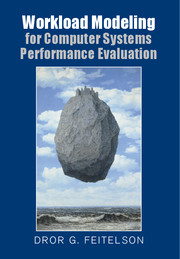Workload Modeling for Computer Systems Performance Evaluation
Reliable performance evaluations require the use of representative workloads. This is no easy task since modern computer systems and their workloads are complex, with many interrelated attributes and complicated structures. Experts often use sophisticated mathematics to analyze and describe workload models, making these models difficult for practitioners to grasp. This book aims to close this gap by emphasizing the intuition and the reasoning behind the definitions and derivations related to the workload models. It provides numerous examples from real production systems, with hundreds of graphs. Using this book, readers will be able to analyze collected workload data and clean it if necessary, derive statistical models that include skewed marginal distributions and correlations, and consider the need for generative models and feedback from the system. The descriptive statistics techniques covered are also useful for other domains.
- Explains advanced statistical concepts like heavy tails and self similarity, emphasizing intuition and understanding
- Includes numerous illustrations created using real data sets from production computing systems
- Brings together material from diverse sources such as production computing systems, statistics, and computer science
Product details
No date availableHardback
9781107078239
564 pages
260 × 182 × 30 mm
1.14kg
182 b/w illus. 90 colour illus. 18 tables
Table of Contents
- 1. Introduction
- 2. Workload data
- 3. Statistical distributions
- 4. Fitting distributions to data
- 5. Heavy tails
- 6. Correlations in workloads
- 7. Self-similarity and long-range dependence
- 8. Hierarchical generative models
- 9. Case studies
- 10. Summary and outlook.





